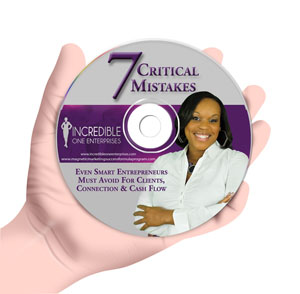 When you are building a business, you have to be clear about the internal and external forces that help (or hinder) its existence. Sadly, most business owners don’t take the time to evaluate their businesses. As a leading coach and strategist, I actually recommend that you perform an analysis on your business at least once each year. (You should really conduct one for every product, service, launch, team member etc.)
When you are building a business, you have to be clear about the internal and external forces that help (or hinder) its existence. Sadly, most business owners don’t take the time to evaluate their businesses. As a leading coach and strategist, I actually recommend that you perform an analysis on your business at least once each year. (You should really conduct one for every product, service, launch, team member etc.)
If you used to work in an organization or company, you’ve likely heard of a SWOT analysis. If you’ve heard of one, you’ve likely conducted one on something – a project, a team member, a product, you name it – you took the time to clarify the strengths, weaknesses, opportunities and threats associated with what ever it was. The truth is, every business has internal strengths and weaknesses as well as external opportunities and threats, and not knowing how to assess them can keep your business from experiencing exponential growth.
I admit I was kind of excited when Debbie’s question came in. I’m answering it in this week’s episode of Incredible Factor TV:
“Hi Darnyelle. I was recently introduced to the concept of doing a SWOT Analysis for my business. I mean I had heard of a SWOT when I worked in Corporate America but I never ever thought about doing them now that I’m out on my own. Would you share your perspective on a SWOT and when you feel business owners should conduct them?”
See my response to Debbie’s question in this week’s episode:
Before you do a SWOT analysis, do your due diligence and research your industry so that you have some data to leverage in your evaluation. You should also have someone who knows you and you business participate in the process. Here is how I recommend you conduct your annual (or more often) SWOT analysis.
1. Determine the overall goal of your SWOT analysis. In order to ensure that this evaluation is productive and strategic, have a clear goal for the reason it’s being done. Are you looking to uncover money leaks in your business? Are you looking to do a competitive analysis on your industry? Are you thinking of bringing a new product to market? Being clear from the onset of the evaluation will ensure that you achieve your end goal.
2. List all of your business’ internal strengths. Once your goal is clear, start by listing all of the strengths that you have as it pertains to the goal. You want to list all strengths as they relate to everything from team members to pricing and everything in between.
3. List all of your business’ internal weaknesses. Next, clarify all of the things that put your business at a disadvantage. Be honest. You cannot conquer what you refuse to confront. Weaknesses are harmful, especially when they go undetected. Taking the time to clarify what you don’t do so well is key to positioning yourself to change that.
4. List your potential external opportunities for your business. Here, share anything that could enhance your business – this could be technology, hiring a new team member, introducing a new offering or many other possibilities.
5. List your potential external threats. Be sure to clarify the potential things that could put a monkey wrench in your plan to build your business. Think of those threats that are seen and unseen, perceived and un-perceived.
6. Determine your priorities based on the SWOT. At this point, you should have four separate lists for your business. I recommend that you put them on a white board on large sticky pads and display them where you (and your team) can assess them. Once you can see everything, you can start to establish priority in addressing the items on each list.
7. Create your action plan of how to address uncovered issues from your SWOT. As you review your four lists, consider using the following questions to guide you toward creating an effective plan of action:
- How can we use our strengths to take advantage of the opportunities identified?
- How can we use our strengths to overcome the threats identified?
- What do we need to do to overcome the identified weaknesses in order to take advantage of the opportunities?
- How will we minimize our weaknesses to overcome the identified threats?
- What did we learn about the business?
- What will we do differently as a result of this analysis?
As you complete this, keep in mind that strengths and opportunities are helpful but threats and weaknesses are harmful to your overall goals of growing your business.
Now, I want to hear from you: What’s your two cents? Have you ever conducted a SWOT analysis on your business? What can you share to help Debbie?
 ©2014 by Darnyelle A. Jervey. All Rights Reserved. Darnyelle A. Jervey, MBA, The Incredible Factor Business Optimization Coach and Mentor, is the founder of Incredible One Enterprises®, Incredible Factor University® and the Leverage Your Incredible Factor System®, a proven step-by-step program so you experience financial and spiritual abundance in your life because of your business. For more information and a FREE audio CD “7 Critical Mistakes Even Smart Entrepreneurs Must Avoid for Clients, Connection and Cash Flow!” just fill out the form below.
©2014 by Darnyelle A. Jervey. All Rights Reserved. Darnyelle A. Jervey, MBA, The Incredible Factor Business Optimization Coach and Mentor, is the founder of Incredible One Enterprises®, Incredible Factor University® and the Leverage Your Incredible Factor System®, a proven step-by-step program so you experience financial and spiritual abundance in your life because of your business. For more information and a FREE audio CD “7 Critical Mistakes Even Smart Entrepreneurs Must Avoid for Clients, Connection and Cash Flow!” just fill out the form below.






